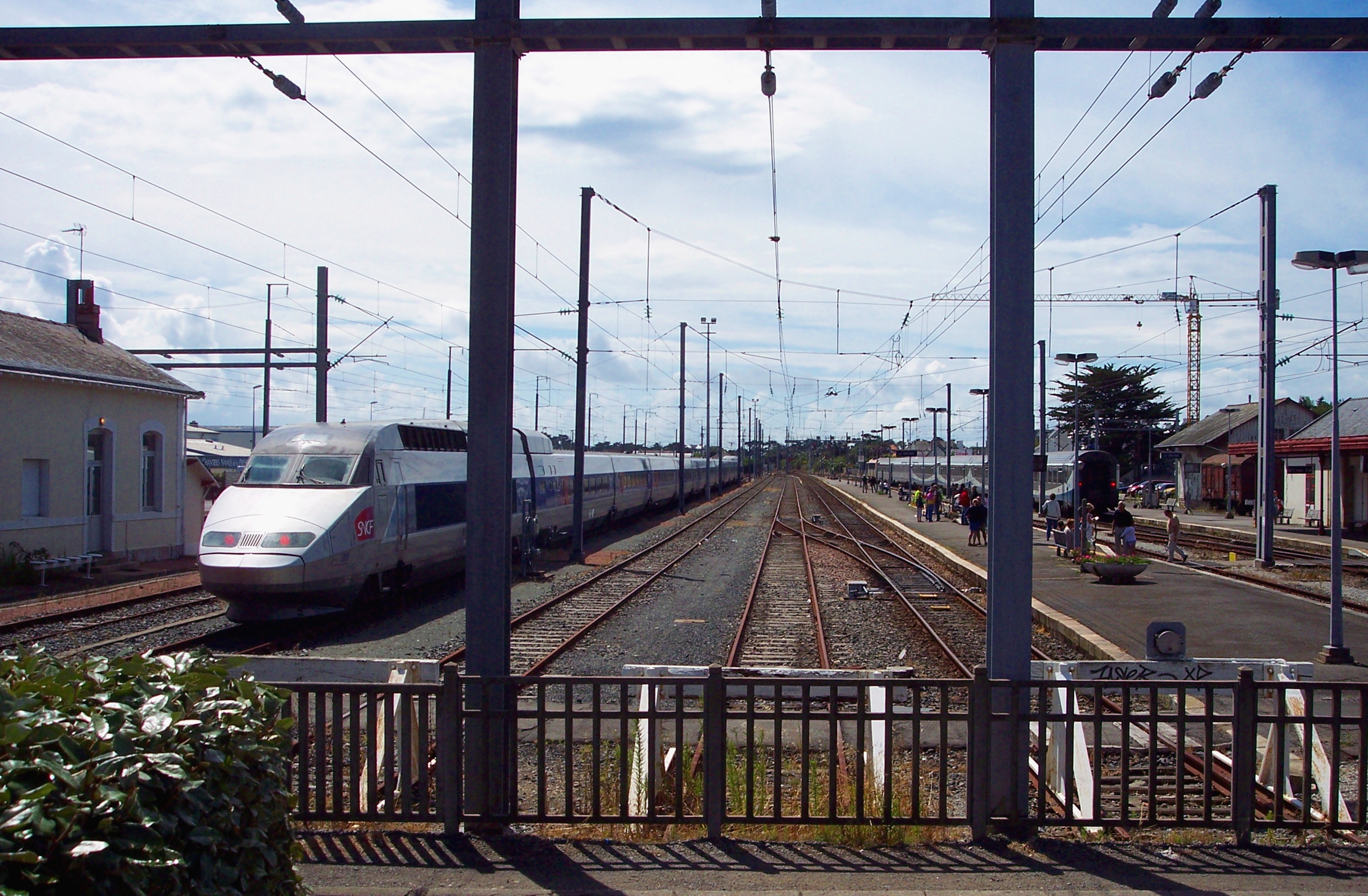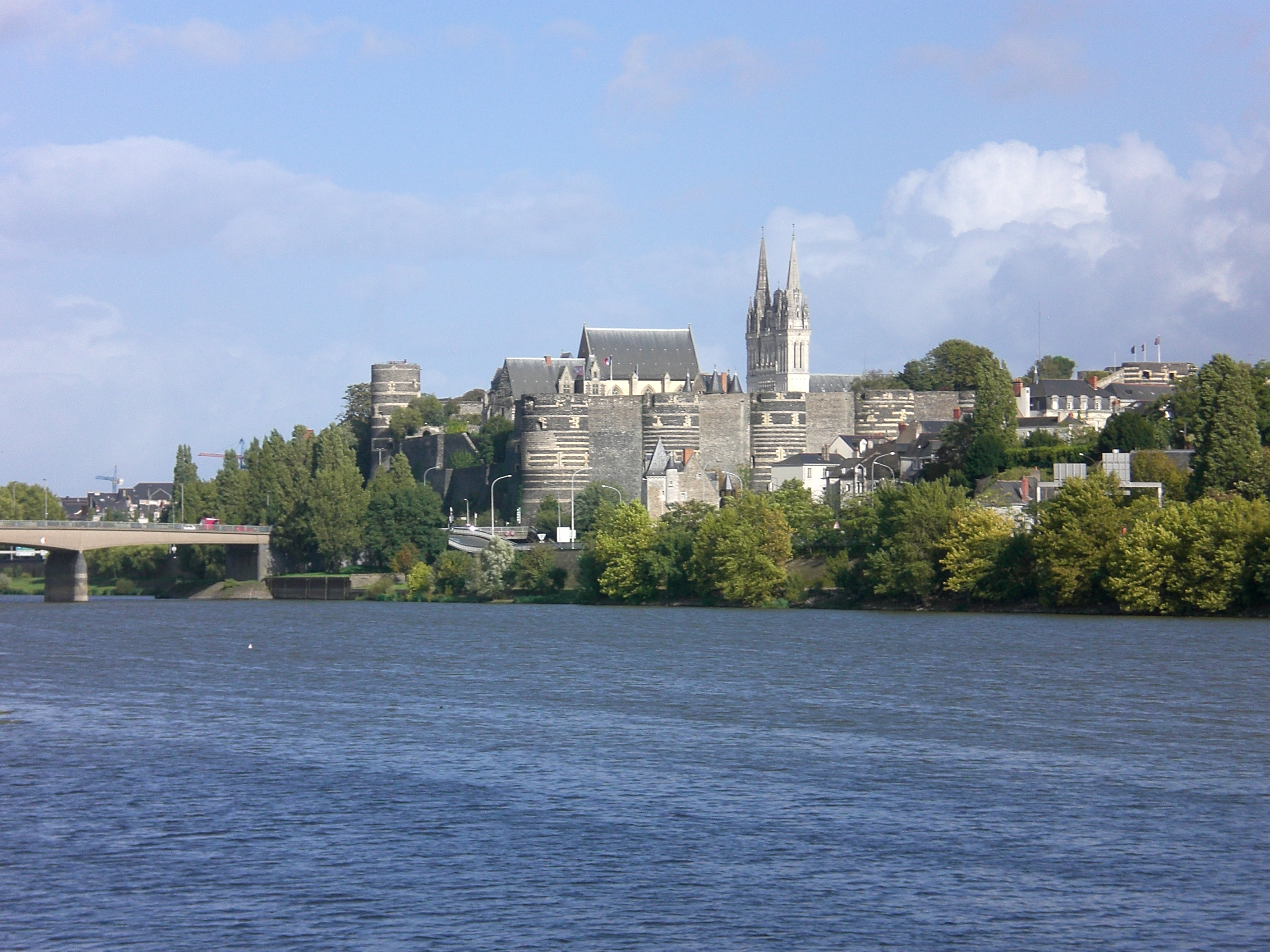|
Saint-Philbert-de-Grand-Lieu
Saint-Philbert-de-Grand-Lieu (; br, Sant-Filberzh-Deaz) is a commune in the Loire-Atlantique department in western France. It is about 400 km southwest of Paris, via Chartres, Le Mans, Angers, and Nantes. The town is twinned with the Welsh suburb of Radyr in Cardiff, Wales's Capital. Population Related persons Vicomte Bertrand Jochaud du Plessix, a lieutenant in the Free French Forces, reposes in the local cemetery. He died along with three comrades on 30 June 1940 when they were shot down by the Spanish while attempting to land their aircraft in Gibraltar. He was first buried at Gibraltar, and was reinterred in Saint-Philbert-de-Grand-Lieu. He was awarded Compagnon de la Libération posthumously in May 1941. His daughter is the American writer Francine du Plessix Gray Francine du Plessix Gray (September 25, 1930 – January 13, 2019), was a French-American Pulitzer Prize–nominated writer and literary critic. Early life and education She was born on Septemb ... [...More Info...] [...Related Items...] OR: [Wikipedia] [Google] [Baidu] |
Communes Of The Loire-Atlantique Department
The following is a list of the 207 communes of the Loire-Atlantique department of France. The communes cooperate in the following intercommunalities (as of 2020):BANATIC Périmètre des EPCI à fiscalité propre. Accessed 3 July 2020. * Nantes Métropole *Communauté d'agglomération *Communauté d'agglomération * [...More Info...] [...Related Items...] OR: [Wikipedia] [Google] [Baidu] |
Communes Of France
The () is a level of administrative division in the French Republic. French are analogous to civil townships and incorporated municipalities in the United States and Canada, ' in Germany, ' in Italy, or ' in Spain. The United Kingdom's equivalent are civil parishes, although some areas, particularly urban areas, are unparished. are based on historical geographic communities or villages and are vested with significant powers to manage the populations and land of the geographic area covered. The are the fourth-level administrative divisions of France. vary widely in size and area, from large sprawling cities with millions of inhabitants like Paris, to small hamlets with only a handful of inhabitants. typically are based on pre-existing villages and facilitate local governance. All have names, but not all named geographic areas or groups of people residing together are ( or ), the difference residing in the lack of administrative powers. Except for the municipal arrondi ... [...More Info...] [...Related Items...] OR: [Wikipedia] [Google] [Baidu] |
Loire-Atlantique
Loire-Atlantique (; br, Liger-Atlantel; before 1957: ''Loire-Inférieure'', br, Liger-Izelañ, link=no) is a department in Pays de la Loire on the west coast of France, named after the river Loire and the Atlantic Ocean. It had a population of 1,429,272 in 2019.Populations légales 2019: 44 Loire-Atlantique INSEE History Loire-Atlantique is one of the original 83 departments created during the on March 4, 1790. Originally, it was named Loire-Inférieure, but its name was changed in March 9, 1957 to Loire-Atlantique. The area is part of the historical |
Departments Of France
In the administrative divisions of France, the department (french: département, ) is one of the three levels of government under the national level ("territorial collectivities"), between the administrative regions and the communes. Ninety-six departments are in metropolitan France, and five are overseas departments, which are also classified as overseas regions. Departments are further subdivided into 332 arrondissements, and these are divided into cantons. The last two levels of government have no autonomy; they are the basis of local organisation of police, fire departments and, sometimes, administration of elections. Each department is administered by an elected body called a departmental council ( ing. lur.. From 1800 to April 2015, these were called general councils ( ing. lur.. Each council has a president. Their main areas of responsibility include the management of a number of social and welfare allowances, of junior high school () buildings and technical staff, ... [...More Info...] [...Related Items...] OR: [Wikipedia] [Google] [Baidu] |
Chartres
Chartres () is the prefecture of the Eure-et-Loir department in the Centre-Val de Loire region in France. It is located about southwest of Paris. At the 2019 census, there were 170,763 inhabitants in the metropolitan area of Chartres (as defined by the INSEE), 38,534 of whom lived in the city (commune) of Chartres proper. Chartres is famous worldwide for its cathedral. Mostly constructed between 1193 and 1250, this Gothic cathedral is in an exceptional state of preservation. The majority of the original stained glass windows survive intact, while the architecture has seen only minor changes since the early 13th century. Part of the old town, including most of the library associated with the School of Chartres, was destroyed by Allies of World War II, Allied bombs in 1944. History Chartres was one of the principal towns in Gaul of the Carnutes, a Celts, Celtic tribe. In the Gallo-Roman period, it was called ''Autricum'', name derived from the river ''Autura'' (Eure), and a ... [...More Info...] [...Related Items...] OR: [Wikipedia] [Google] [Baidu] |
Le Mans
Le Mans (, ) is a city in northwestern France on the Sarthe River where it meets the Huisne. Traditionally the capital of the province of Maine, it is now the capital of the Sarthe department and the seat of the Roman Catholic diocese of Le Mans. Le Mans is a part of the Pays de la Loire region. Its inhabitants are called ''Manceaux'' (male) and ''Mancelles'' (female). Since 1923, the city has hosted the 24 Hours of Le Mans, the world's oldest active endurance sports car race. History First mentioned by Claudius Ptolemy, the Roman city ''Vindinium'' was the capital of the Aulerci, a sub tribe of the Aedui. Le Mans is also known as ''Civitas Cenomanorum'' (City of the Cenomani), or ''Cenomanus''. Their city, seized by the Romans in 47 BC, was within the ancient Roman province of Gallia Lugdunensis. A 3rd-century amphitheatre is still visible. The ''thermae'' were demolished during the crisis of the third century when workers were mobilized to build the city's defensive walls ... [...More Info...] [...Related Items...] OR: [Wikipedia] [Google] [Baidu] |
Angers
Angers (, , ) is a city in western France, about southwest of Paris. It is the prefecture of the Maine-et-Loire department and was the capital of the province of Anjou until the French Revolution. The inhabitants of both the city and the province are called ''Angevins'' or, more rarely, ''Angeriens''. Angers proper covers and has a population of 154,508 inhabitants, while around 432,900 live in its metropolitan area (''aire d'attraction''). The Angers Loire Métropole is made up of 29 communes covering with 299,500 inhabitants (2018).Comparateur de territoire INSEE Not including the broader metropolitan area, Angers is the third most populous |
Nantes
Nantes (, , ; Gallo: or ; ) is a city in Loire-Atlantique on the Loire, from the Atlantic coast. The city is the sixth largest in France, with a population of 314,138 in Nantes proper and a metropolitan area of nearly 1 million inhabitants (2018). With Saint-Nazaire, a seaport on the Loire estuary, Nantes forms one of the main north-western French metropolitan agglomerations. It is the administrative seat of the Loire-Atlantique department and the Pays de la Loire region, one of 18 regions of France. Nantes belongs historically and culturally to Brittany, a former duchy and province, and its omission from the modern administrative region of Brittany is controversial. Nantes was identified during classical antiquity as a port on the Loire. It was the seat of a bishopric at the end of the Roman era before it was conquered by the Bretons in 851. Although Nantes was the primary residence of the 15th-century dukes of Brittany, Rennes became the provincial capital after th ... [...More Info...] [...Related Items...] OR: [Wikipedia] [Google] [Baidu] |
Vicomte
A viscount ( , for male) or viscountess (, for female) is a title used in certain European countries for a noble of varying status. In many countries a viscount, and its historical equivalents, was a non-hereditary, administrative or judicial position, and did not develop into a hereditary title until much later. In the case of French viscounts, it is customary to leave the title untranslated as vicomte . Etymology The word ''viscount'' comes from Old French (Modern French: ), itself from Medieval Latin , accusative of , from Late Latin "deputy" + Latin (originally "companion"; later Roman imperial courtier or trusted appointee, ultimately count). History During the Carolingian Empire, the kings appointed counts to administer provinces and other smaller regions, as governors and military commanders. Viscounts were appointed to assist the counts in their running of the province, and often took on judicial responsibility. The kings strictly prevented the offices of their coun ... [...More Info...] [...Related Items...] OR: [Wikipedia] [Google] [Baidu] |
Free French Forces
__NOTOC__ The French Liberation Army (french: Armée française de la Libération or AFL) was the reunified French Army that arose from the merging of the Armée d'Afrique with the prior Free French Forces (french: Forces françaises libres, label=none or FFL) during World War II. The military force of Free France, it participated in the Italian and Tunisian campaigns before landing in France with the allies liberating the country and occupying Germany until it had forced its capitulation in 1945. History The French Liberation Army was created in 1943 when the Army of Africa () led by General Giraud was combined with the Free French Forces of General de Gaulle. The AFL participated in the campaigns of Tunisia and Italy; during the Italian campaign the AFL was known as the French Expeditionary Corps in Italy ( ''en Italie or CEFI)'' making a quarter of the troops deployed. The AFL was key in the liberation of Corsica, the first French metropolitan department to be liberate ... [...More Info...] [...Related Items...] OR: [Wikipedia] [Google] [Baidu] |
Gibraltar
) , anthem = " God Save the King" , song = " Gibraltar Anthem" , image_map = Gibraltar location in Europe.svg , map_alt = Location of Gibraltar in Europe , map_caption = United Kingdom shown in pale green , mapsize = , image_map2 = Gibraltar map-en-edit2.svg , map_alt2 = Map of Gibraltar , map_caption2 = Map of Gibraltar , mapsize2 = , subdivision_type = Sovereign state , subdivision_name = , established_title = British capture , established_date = 4 August 1704 , established_title2 = , established_date2 = 11 April 1713 , established_title3 = National Day , established_date3 = 10 September 1967 , established_title4 = Accession to EEC , established_date4 = 1 January 1973 , established_title5 = Withdrawal from the EU , established_date5 = 31 January 2020 , official_languages = English , languages_type = Spoken languages , languages = , capital = Westside, Gibraltar (de facto) , coordinates = , largest_settlement_type = largest district , l ... [...More Info...] [...Related Items...] OR: [Wikipedia] [Google] [Baidu] |
Compagnon De La Libération
The Order of Liberation (french: Ordre de la Libération) is a French Order which was awarded to heroes of the Liberation of France during World War II. It is a very high honour, second only after the ''Légion d’Honneur'' (Legion of Honour). Very few people, military units and communes were ever awarded it; and only for their deeds during World War II. A different order, the ''Médaille de la Résistance'' ("Resistance Medal"), was created and awarded for lesser but still distinguished deeds by members of the Resistance. History The ''Order of Liberation'' was established by General de Gaulle in order n° 7, signed on 16 November 1940 in Brazzaville, the capital of ''France Libre'' from 1940 to 1943. The object of the Order was to "reward people, of the military or civilian communities, who will have distinguished themselves in the task of liberating France and her Empire". There were no restrictions as to age, sex, rank, origin or nationality; nor any regarding the nat ... [...More Info...] [...Related Items...] OR: [Wikipedia] [Google] [Baidu] |






